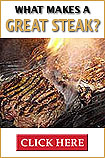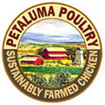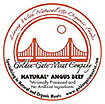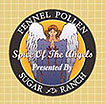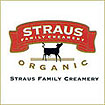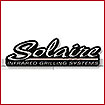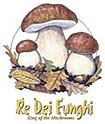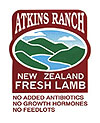What is CLEARSMOKE®,
Other than a fish smoking technology owned by
the Anova Food Group
based out of Hertogenbosch, The Netherlands and
having offices in
Atlanta,
Georgia, Kenya, Indonesia, Vietnam and France.
Let's start out by telling you what it isn't.
Story
by: Ellen Walsh
Advancements
in Today's Seafood Industry
It
isn't super-purified smoke, tasteless smoke, filtered
wood smoke, industrial CO (Carbon Monoxide)
or commercially mixed Carbon Monoxide gas.
CLEARSMOKE®
starts out as one ingredient: hickory wood chips.
These chips are processed through the CLEARSMOKE®
smoke generation
system removing all particulate components of
the smoke (ash, tar flavor/odor and anything
larger than 1 micron). No additives, preservatives
or chemicals of any kind are used in this process.
What's left are the naturally occurring preservation
gases and standard phenolic compounds present
in all natural woodsmoke.
For
chefs and discriminating foodies” concerned
with the best seafood that they can trust on a
consistent basis, the CLEARSMOKE®
technology opens
a new door.
This
process will make the seafood you serve retain
the look, taste, texture and color of fresh even
through freezing and defrosting. Shrinkage on
tuna at retail is reduced from 35% to 3%. The
process improves the texture of the product so
it looks re-freshed after thawing. Histamine forming
and spoilage bacteria that flourish in fresh seafood
transportation are virtually eliminated by the
process and completely static in frozen transit.
Profit.
And last but certainly not least you are offering
a product comparable to fresh but at a similar
or lower price.
Anova Food Group,
holder of the
CLEARSMOKE®
Technology patent, imports 750
metric tons of fish a year from processing plants
throughout the world utilizing the CLEARSMOKE®
technology. While fish enters the retail market
place clearly labeled with the CLEARSMOKE®
brand, the fish
reaches the consumer as an unbranded product.
Although foodservice buyers and suppliers choose
product produced this way because of its outstanding
consistency and safety features, very little is
known about this process by the professional chef
as well as the consumer.
Discriminating
seafood purveyors have always had to distinguish
between the best of fresh fish, and a high quality
frozen fish. As educated food professionals and
consumers, we are looking for the best seafood
that money can buy. We say we want fresh, however
there is a global transportation issue. Under
the best of circumstances, fresh seafood caught
in foreign waters takes almost 14 days to reach
your plate. Maybe less time if caught off American
shores for the American market.
Anova
Food Group, works
with seafood processors globally through licensing
agreements for their CLEARSMOKE®
Technology.
This insures speedy delivery from ocean to plant
where the fish is “Clearsmoked”, quick
frozen, and then transported to the United States,
the EU and other international markets.
CLEARSMOKE®
does not put the fish in a “processed”category
as opposed to the fresh” category.
CLEARSMOKE®
is not an additive. While wholly understood by
the EU market as a smoking process and subsequently
approved for European distribution, buyers in
the United States are still struggling to distinguish
the differences of what the CLEARSMOKE®
technology
has to offer chefs and consumers from the unscrupulous
activities of processors who are utilizing straight
Carbon Monoxide.
Let's
look at this Scientifically.
Hickory
trees grown in the state of Tennessee are cut
into chips. No additives, preservatives or chemicals
are ever added. Smoke is generated by burning
the chips. This smoke passes through a primary
filter which removes all of the particulate; ash,
tar and anything larger than one micron. This
is a passive form of filtration that does not
concentrate or chemically alter the natural composition
of the smoke. A secondary filter reduces, but
does not completely eliminate, the odor and color
components of the smoke, leaving the all important
preservation gasses” intact. The “smoke”
is accumulated and then applied directly to the
product. The product is removed from the smoke
chamber, quickly bathed in ozonated water to remove
any residual smoke odor and further eliminate
bacteria, then frozen at zero degrees, leaving
a pure unadulterated product.
When
you barbecue with wood and throw a T-Bone Steak
on the grill, the smoke contains, among many things,
carbon monoxide and carbon dioxide. You may recall
the earth shaking experiments of the 80s when
this made big news. Scientists grilled steaks
to prove the presence of Carbon Monoxide –and
then, upon conclusion of the experiment, they
ate the steaks, every one of them.
Carbon
Monoxide, in the low concentrations found in the
preservation gasses of CLEARSMOKE®
locks in the color
because it is a receptor, but only for a limited
amount of time. The rest of the Carbon Monoxide
dissipates, as the carbon molecule has done its
job. Eventually, even that color will diminish
as the fish ages, and the natural course of degradation
continues.
Industrial
Carbon Monoxide or highly concentrated Carbon
Monoxide, is dangerous because the color never
decreases even as the quality of the product does,
thus raising serious food safety issues.
The use of industrial Carbon Monoxide, while banned
in the EU has been able to happen as a result
of a loophole in the law. Whereas Carbon Monoxide
is legal since it is a component of a GRAS (generally
regarded as safe) substance, wood smoke,
and therefore has a place on the product's label,
unscrupulous seafood suppliers who wish to take
a cheaper and quicker route, are dousing seafood
with high levels of carbon monoxide, thus hiding
serious defects in the fish from unsuspecting
consumers and inspectors as well!
In
a world where news is reported in sound bites,
this has caused a serious misunderstanding as
to the role Carbon Monoxide plays in this whole
process, resulting in out of hand rejection of
smoked products in places where the product could
be of great value.
Plans
are currently in place by Anova
Food Group to
educate chefs as to the nature of the process,
and how to incorporate its usage into their demanding
agenda of providing the best quality seafood to
a demanding and well educated foodservice professional
and home entertainer.
Anova
Food Group
takes the preservation of seafood to still another
step by importing the CLEARSMOKE®
fish as frozen (unless
requested as fresh). And the reason is that freezing
tuna and other species for 30 days kills the parasites.
There are more parasites in salmon and snapper,
but the end result is the same –freezing
fish for at least 30 days kills most of the bacteria
and all of the parasites in the fish, plus substantially
reduces the histamine growth environment, so dangerous
to fish consumption.
Does
this make it undesirable to demanding markets?
Even in Tokyo's Tsukiji Central Fish Market, the
biggest fish auction of its kind, the frozen fish
section is five times the size of the fresh section.
The rising popularity of sushi bars requires a
consistent product. It is an accepted fact in
the seafood industry that consistency and safety
of sushi requires the use of frozen product. The
state of South Carolina has required that in order
to serve raw fish, it has to have been frozen
for thirty days. It remains to be seen if other
states will require it, but it is definitely being
utilized.
CLEARSMOKE®
is
the clear choice for keeping seafood fresh tasting,
great looking, extending shelf life, eliminating
bacteria and risk and increasing profit and your
customer's dining pleasure.
Other
Great Links:
Ahi
Cones by
Chef James Ormsby
Anovafood.net
Anova
Food Group Story PDF






